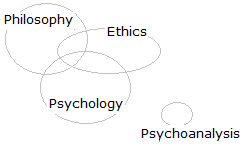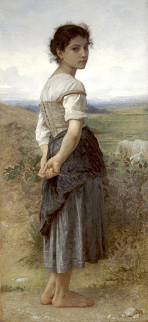The Kuriki method (the first edition in 2007) is a theory about Tourette’s syndrome (tic disorder) and obsessive-compulsive disorder to cure these diseases without medication. This theory is based on the author’s inference and interpretation regarding the structure of these diseases. Since it has been written for the psychoanalysts, reading will be difficult for people in general and it might be sometimes read erroneously. Therefore the Kuriki method must presuppose that the patient is treated by a nearby psychoanalyst, and that, between the patient and the Kuriki method, there is always the psychoanalyst. The explosion of emotional catharsis, which has strong repercussions, is done only for three seconds, once a week: beyond this rhythm, it would be an accident caused by negligence, and the psychoanalyst who is inexperienced in emotional catharsis must take responsibility for the temporary mental collapse caused by the accident. Also, to the patient who has weak capacity of logical reasoning, the psychoanalyst must explain well on the violent emotion of revenge caused by the illusory confusion between the person of the traumatic image in his head and the person in the real world.
Cure for Tourette’s syndrome (tic disorder) and OCD without medication
§05

About Freudian Psychoanalysis regarding tic disorder (Tourette’s syndrome) and obsessive-compulsive disorder.
Embarrassing Freudian ideas.
Psychoanalysis is a very small isolated domain, which should not be mixed with other domains, such as philosophy, psychology, ethics, etc. The purpose of psychoanalysis is nothig but the cure of neurosis. All psychoanalytic terms are nothing but descriptive expressions for the treatment of neurosis; i.e., figurative expressions for understanding the way of neurosis treatment. Neurosis is a disease caused by sexual or genital disturbance in childhood, or since the childhood of an adult person, and it can be cured by awareness of the repressed object and the repressed emotion; abreaction. Consequently, in the counseling room, things in question can be very embarrassing naturally. It is quite normal that it is difficult to pronounce these words concerning sexual things and the genitals. In fact, psychoanalysis is nothing but a way to solve sexual and genital problems of childhood. It is the fate of psychoanalysis to use many sexal and genital words and often to be seen as a kind of sexual perversion. There is no therapist who does not put the Libido, which is very bodily, in childhood of 0-5 years at the center of the issue. It is inevitable that there are always obscene elements in the content of what a therapist talks about.
Freud could not cure tic disorder and OCD; the reasons could be as follows.
1. Freud thought that tic movements and OCD acts were symptoms. He believed that a tic movement is an involuntary movement.
2. Freud did not think that, in the congenital tendency to tic, disagreeable physical sensations can be bodily repressed.
3. He thought tic movements and OCD acts had the expressive significance, which indicated the content of the trauma. The false motive of rationalization will be added after the symptom.
4. He thought, as one of the causes of neurosis, the sexual problem of childhood could be mostly the ambiguity in the triangular relationship with the parents.
5. He thought that, for tic disorder and OCD, the discovery and the verbalization of the trauma would be sufficient as abreaction.
6. He thought that the symptoms of tic disorder and OCD were effects of repression.
On the other hand, there are big differences in the Kuriki method:
1. The symptom of neurosis is the amplification of the compulsion on an object. Only voluntary movements can be forced by compulsion.
· The symptom of tic disorder, i.e., the symptom that a patient feels, is the appearance of intramuscular sensation similar to muscular contraction without actual contraction in a voluntary muscle. The tic movements are voluntary movements, which are dominated by the Absolute Compulsion of neurosis. The understanding about neurosis is the understanding about the corporality of the Absolute Compulsion. In the Conscious, 《the obsessive idea of immobility》on the voluntary muscle is amplified as physical sensation, the voluntary movement of tic is forced absolutely and bodily. The object of compulsion is the physical sensation of the presence of a voluntary muscle. The idea that there is a voluntary muscle there. The amplification of the compulsion until the voluntary movement of tic.
· «The compulsive physical sensation» of OCD is a kind of disagreeable physical sensation, which is interpreted by the Conscious as compulsive anxiety. The object of compulsion is a thing, and the Conscious is forced to do the act to this thing.
2. As neurosis in autism spectrum disorder, the definition of the function of pathological repression involves bodily sensations as the objects of repression.
3. The manner of a tic movement and the manner of an act of OCD have no expressive significance. The purpose of tic movement and OCD act is to be a big object of the Conscious at the foreground of the Conscious of the patient; i.e., the occupation of the intentionality of the Conscious. This requires the movement and the act to be disturbing and absurd for the Conscious of the patient.
Freudian rationalization consists in hiding the meaning of the symbolic object. The false motive will be invented after the symptom.
Rationalization in Kuriki method is the reverse of Freudian rationalization. It is the mechanism of randomly selecting the object in the plausibility of a false motive. For example, for the selection between onychophagia and hand washing, the patient takes the easiest and most plausible false motive between “it’s faster than a nail clipper” and “germs are dangerous to health”. First, a false motive is possible, then this object will be chosen as a symptom. It is a mistake to look for expressive and symbolic meanings in an object of compulsion. The real cause of this disease is that the compulsion is a bodily tool of repression.
4. Sexual annoyance of childhood can be studied also on the bodily level, in view of Asperger’s specificity in the bodily sensations.
5. For the cure of tic disorder and the cure of OCD, the abreaction requires explosions of emotional catharsis.
6. Tic disorder and OCD are pathological mechanisms of repression, and the symptoms are a means of repression.
Search for trauma
Once the patient with tic or obsessive compulsive disorder has understood that his symptom is a bodily repression mechanism, he will automatically recall his sexual-genital trauma within a few weeks. Because as long as the mechanism of the upper layer is unknown to the Conscious, the upper layer will repress the lower layer.
Often, very low level therapists avoid the sexual-genital target, saying “difficulty with schoolwork”, “severe parents”, etc.
Normally, non-sexual-genital disagreeable things are obviously recognized in the Conscious every day as disagreeable things. Repression, it is that the child is happy in his Conscious with repressed disagreeable things.
Autistic spectrum
Asperger’s syndrome has many types. Some children with Asperger need verbal expressions for the understanding of a certain type of mental judgment. Without verbal expression, disagreeable sexual-genital mental judgment might be systematically repressed. In addition, there are people who have few emotional expressions, people who suddenly express very strong emotions, etc. For example, for children with Asperger, the body of someone and cutaneous contact by someone can be extremely disagreeable and the disagreeable emotion can be pathologically kept without expression and accumulated in the Unconscious since they were a baby. The traumatic image is an image that is sufficiently concrete and visible. Repression is not the repression of this image, but the repression of the disagreeable emotion that is in this image.
(Author’s Note : If you think that I am a fan of Freud, you are wrong. It’s really a long time ago that I read the complete works of Freud in original version, which are considered classic today. Now, it’s just for the people who have Tourette’s syndrome or OCD that I write this therapeutic theory, which is quite obvious to my eyes. Today, personally, Freud is no more interesting for me.)

